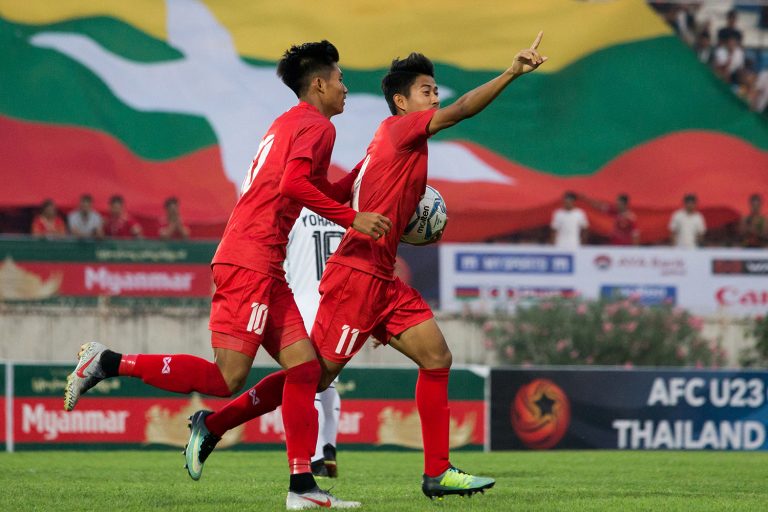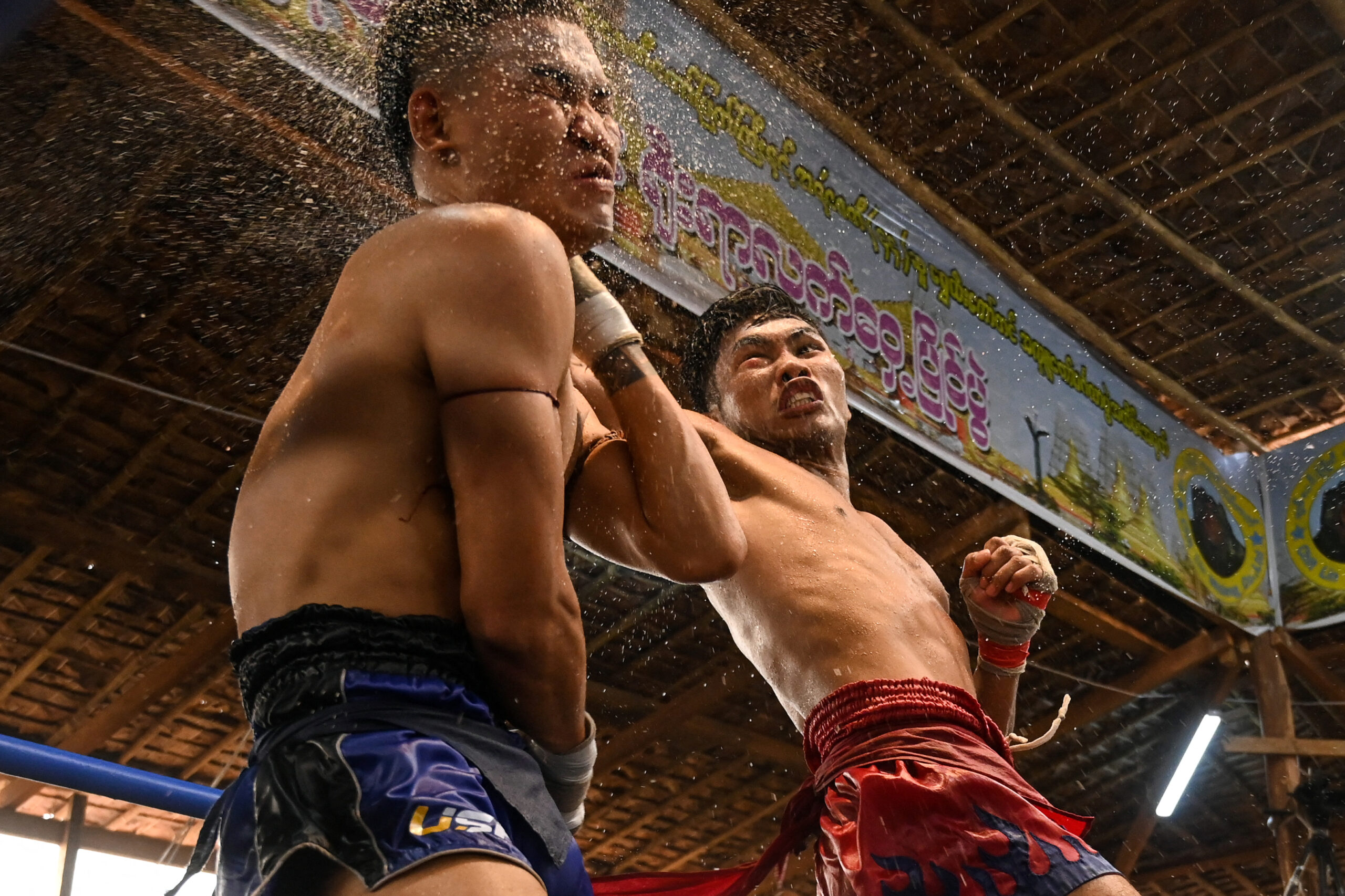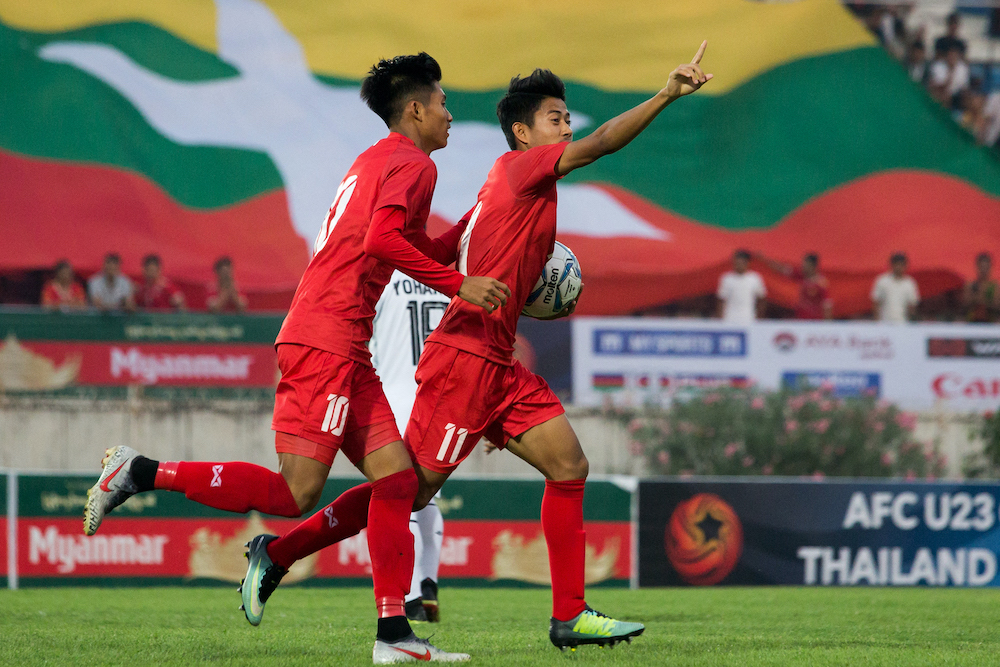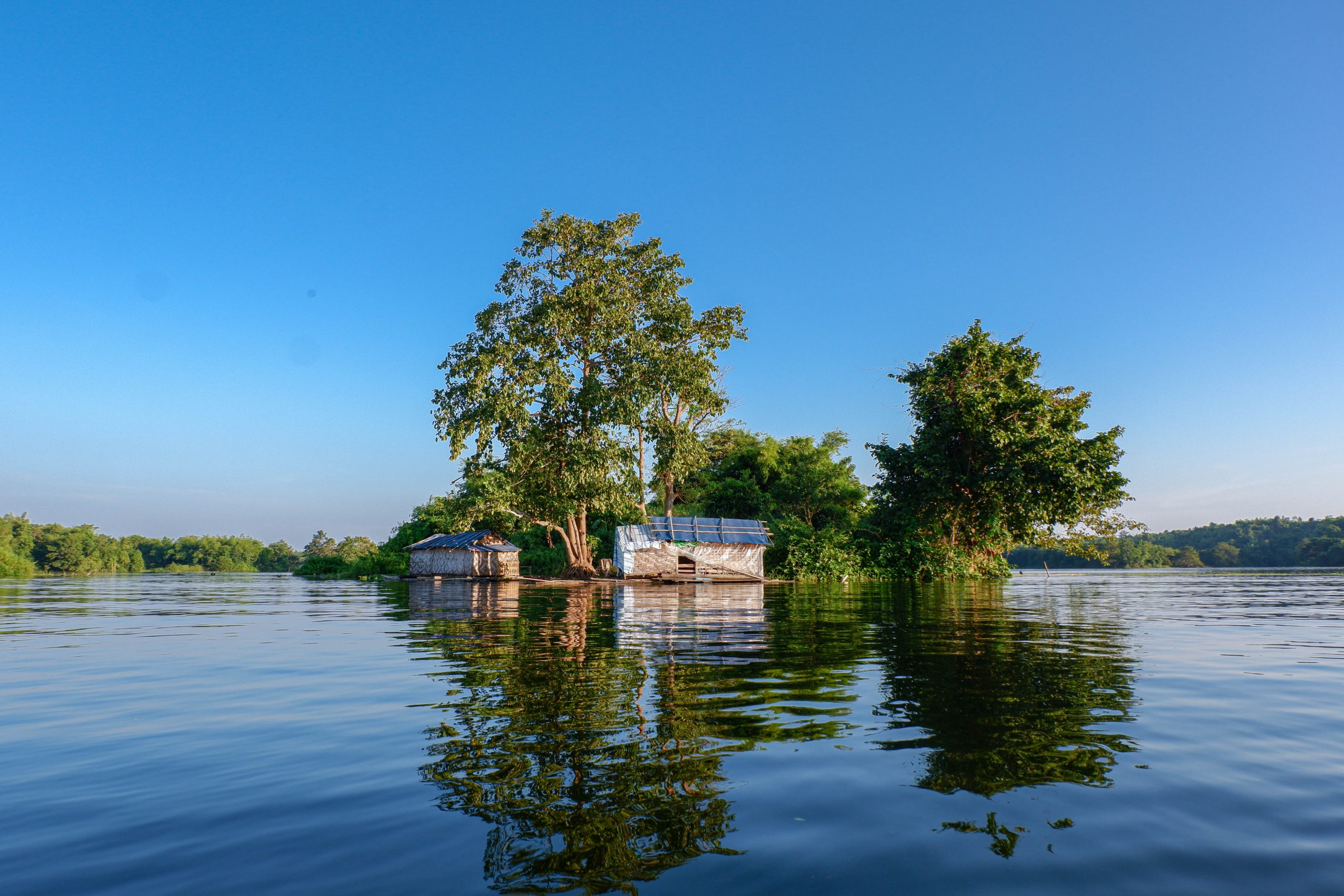Better organisation, more investment and regular bouts broadcast live on TV to generate advertising revenue are among the changes needed to make bare-knuckle traditional lethwei boxing as popular as other codes.
By SITHU AUNG MYINT | FRONTIER
THE ACTION was hard and fast at Thuwanna Stadium on November 3 for an evening of One Championship mixed martial arts bouts featuring Myanmar and foreign boxers, including Myanmar-born United States citizen, Aung La Nsang. Thousands of fans filled the stadium and the event was broadcast live on Skynet TV, leaving no doubt that One Championship (MMA) contests can attract big audiences in Myanmar. At the same venue the next day an international-level Myanmar lethwei (traditional bare-knuckle boxing) event featuring Myanmar and foreign boxers attracted a smaller crowd, though it was also broadcast live on TV. The turnout at the stadium for the lethwei event showed that it is yet to build the fan base needed to make the sport commercially viable, even in its home country.
Professional lethwei has two wealthy supporters in Myanmar. One is U Zay Thiha, vice-chairman of the Zaykabar Co Ltd owned by his father, construction industry tycoon U Khin Shwe. Zay Thiha and his partners, who have several Myanmar boxers under contract, launched the World Lethwei Championship in August 2015. It held its first event in March.
Lethwei’s other big backer is U Soe Tun Shein, chairman of the National Prosperity Co Ltd, which is involved in activities such as agriculture, fisheries, construction and mining. Soe Tun Shein funded the opening of four lethwei clubs – one each in Yangon and Chaung Tha, and two in Mandalay – in late October, in what he described as a gesture of support for the Myanmar Traditional Lethwei Federation, of which he is chairman.
Speaking at the opening of the Yangon club, in Hmawbi Township on October 23, Soe Tun Shein said lethwei was facing challenges because boxers needed more financial support. Top-rated lethwei boxers who earn high incomes could afford to fight as professionals, while those who only earned tens of thousands of kyat struggled to make ends meet.
Support more independent journalism like this. Sign up to be a Frontier member.
Traditional boxers in other members of the Association of Southeast Asian Nations, such as Thailand and the Philippines, earned much more than their Myanmar counterparts and could live well as professionals, Soe Tun Shein said, adding that wanted to give lethwei a higher international profile to benefit the sport and its participants.
Soe Tun Shein’s assessment of the state of lethwei is accurate. It comes as Myanmar is trying to attract greater international interest in the sport, including from Japan. However, lethwei is not the resounding commercial success that traditional boxing is in neighbouring Thailand, where hours of muay thai are screened live on TV on Sundays.
What needs to be done to change the situation so that more Myanmar lethwei boxers can fight as professionals who enjoy a decent standard of living?
The establishment of more lethwei clubs would help to attract more young boxers and foster interest in the sport. There are about 50 lethwei clubs throughout Myanmar, offering training facilities for boxers, as well as keen fans who pay a fee. However, the financial situation of many clubs is precarious and some have been forced to close.
There are several reasons why lethwei is languishing in Myanmar. It lacks the investment, management and regular live TV broadcasts, supported by sponsors and advertisers, that have made muay thai a commercial success in Thailand. Lethwei needs more wealthy backers to invest in the sport, as well as regular bouts broadcast live to attract advertising revenue. Closer cooperation between the sport’s backers and TV stations is essential. Changes are also needed to give boxers a greater share of the profits from matches. When bouts are held in Myanmar, much of the profit goes to event organisers, while the fighters generally receive a small amount.
An important consideration is recovery time from injury, to which lethwei boxers are more susceptible than those who fight in other codes because they do not use gloves. It can take weeks for lethwei boxers to recover, making it impossible for them to fight weekly or monthly, as do boxers who wear gloves, and affecting their earnings.
A possible solution that would boost interest in the sport while preserving tradition would be to hold regular bouts in which lethwei boxers wear gloves, with special matches for bare-knuckle contests that offer much higher purses. Such a compromise would enable lethwei boxers to minimise downtime from injury and enjoy a reasonable income while helping to generate the interest needed to make the sport commercially viable.







